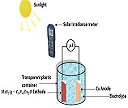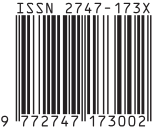Efficiency Improvement of Photoelectrochemical Solar Cell Applications by Using Ternary Hybrid MoS2/g-C3N4/Cu2O
DOI:
https://doi.org/10.19184/cerimre.v6i2.38493Keywords:
Cuprous Oxide, J-V Characteristic, Hetero-structure, Photoelectrochemical, Thermal OxidationAbstract
In this paper, molybdenum disulfide MoS2 was hybridized with graphene carbon nitrite (g-C3N4) and Cu2O in order to enhance the photoelectrochemical (PEC) activity and increase the light absorption range of Cu2O thin film. The melamine powder was poured in an empty container and then heated in a furnace to attain the powder. The ternary hetero-epitaxial growth was achieved by growing of MoS2/g-C3N4 on the Cu2O hybrid by a partial thermal oxidation process. The characteristics of MoS2/g-C3N4/Cu2O hybrid film were investigated through XRD, FT-IR and photoelectronchemistry-related measurements. The PEC behavior of the ternary hybrid electrode was investigated using current-voltage test under illumination. The efficiency calculated from current-voltage test under illumination shows that the presence of graphene carbon nitrite and molybdenum disulphide within the film networks, despite its low content, could stimulate substantial improvement in maximum photoconversion efficiency from 0.036% to 0.33%. This improvement is attributable to the enhancement of the electron-transferring proficiency upon the insertion of g-C3N4 and, MoS2 as confirmed by X-Ray Diffraction Analysis (XRD). The PEC test results signify that the photoelectrochemical activity of the MoS2/g-C3N4/Cu2O ternary hybrid is much higher than that of subtrate. The mechanisms accountable for the enhanced PEC behavior of the MoS2/g-C3N4/Cu2O ternary hybrid are discussed in detail.
Keywords: Cuprous Oxide, J-V Characteristic, Hetero-structure, Photoelectrochemical, Thermal Oxidation.








